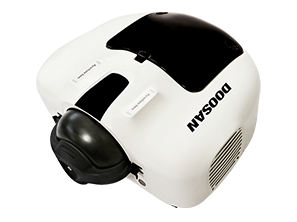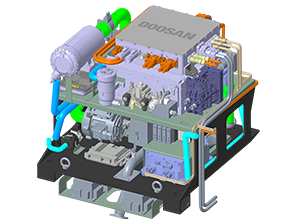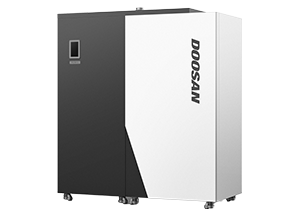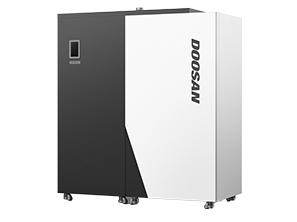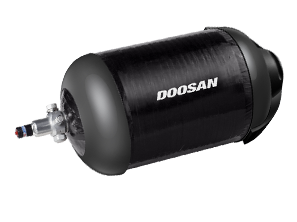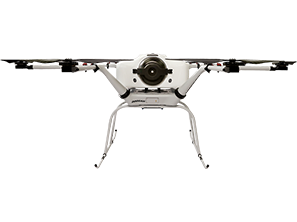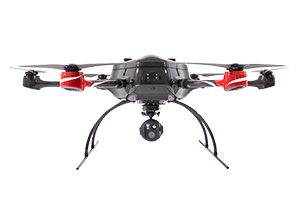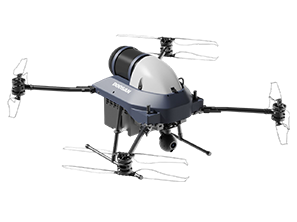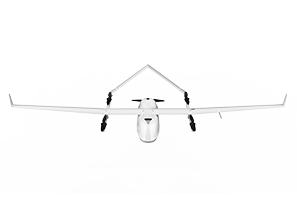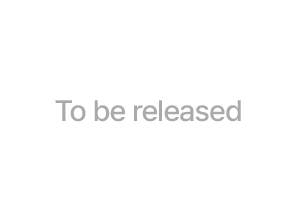News
Doosan Mobility Innovation Featured in Unmanned Systems Technology For its Innovative Hydrogen Fuel Cell Technologies
2020.11.01
Doosan Mobility Innovation was featured in UST 34 (October/November 2020), showcasing its innovative hydrogen fuel cell technologies.
As the article noted, DP30, the hydrogen power pack, and DS30 UAV (which is configured to integrate the DP30), have been launched as the South Korean company's fully commercialized hydrogen-powered octocopter system.
"With a hydrogen fuel cell UAV, 2 hours of flight time is possible, thanks to the energy density o the fuel cell system being three to four times higher than that of batteries," said contact person from Doosan Mobility Innovation. "After more than 3 years of development, we launched the product onto the market last October and started mass production."
"Our DP30 powerpack has been engineered with safety measures such as hybrid batteries to enable redundancy at take-offs and landings. And when fuel runs low - which is calculated using the pressure inside the hydrogen tank - emergency warnings will pop up, in the form of red LED lights at the rear of the powerpack.
"We also provide our own GCS. That is web-based, so users can plan mission flights and view the real-time status of the UAV using their smartphones or laptops."
The DMI GCS can control multiple fleets simultaneously, and in July the company demonstrated a swarm flight operation of UAVs that was programmed and performed via the GCS.
"We'll also soon launch the DS30Pst, a Pixhawk-compatible version of the UAV, which will enable an unlimited communication distance via LTE network links, and multiple payload options,"
In areas where LTE communication is hindered, users will be able to switch to more standard RF links using a simple toggle switch. DMI is also developing an RF data link with a range of up to 20km, which is due for release later this year, with another version giving up to 40km to be developed in the near future.
Read the full article here: https://www.ust-media.com/ust-magazine/UST034/56/#zoom=z
As the article noted, DP30, the hydrogen power pack, and DS30 UAV (which is configured to integrate the DP30), have been launched as the South Korean company's fully commercialized hydrogen-powered octocopter system.
"With a hydrogen fuel cell UAV, 2 hours of flight time is possible, thanks to the energy density o the fuel cell system being three to four times higher than that of batteries," said contact person from Doosan Mobility Innovation. "After more than 3 years of development, we launched the product onto the market last October and started mass production."
"Our DP30 powerpack has been engineered with safety measures such as hybrid batteries to enable redundancy at take-offs and landings. And when fuel runs low - which is calculated using the pressure inside the hydrogen tank - emergency warnings will pop up, in the form of red LED lights at the rear of the powerpack.
"We also provide our own GCS. That is web-based, so users can plan mission flights and view the real-time status of the UAV using their smartphones or laptops."
The DMI GCS can control multiple fleets simultaneously, and in July the company demonstrated a swarm flight operation of UAVs that was programmed and performed via the GCS.
"We'll also soon launch the DS30Pst, a Pixhawk-compatible version of the UAV, which will enable an unlimited communication distance via LTE network links, and multiple payload options,"
In areas where LTE communication is hindered, users will be able to switch to more standard RF links using a simple toggle switch. DMI is also developing an RF data link with a range of up to 20km, which is due for release later this year, with another version giving up to 40km to be developed in the near future.
Read the full article here: https://www.ust-media.com/ust-magazine/UST034/56/#zoom=z


